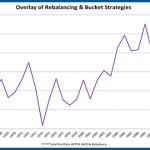The “traditional” AUM fee schedule for an advisory firm has graduated breakpoint as asset levels rise, a tacit acknowledgement that it doesn’t really take twice the work to service a client with twice the assets, and that investment management (and/or with broader financial planning and wealth management services) is fundamentally an expensive service that gets cheaper with “volume” discounts as clients invest more.
By contrast, today’s “robo-advisor” platforms simply charge a flat low AUM fee. While robo-advisors provide only a limited scope of services for that price point – not directly competing against a comprehensive advisor – the nature of charging a low price for a commoditized service implies that advisors can only charge more by explicitly offering additional value-add services (e.g., financial planning and wealth management) for an additional fee, that rises with the client complexity and depth of client service.
While the reality is that none of today’s “robo-advisor” platforms are actually profitable, and their business model is heavily subsidized by venture capital while they try to achieve scale, the difference in fee structures highlights a fundamental difference that will likely remain relevant for years to come: is investment management and supporting financial planning and wealth management services an “expensive” service that gets (relatively) cheaper to provide at larger asset levels, or actually a “cheap” service where higher net worth client can buy value-added services for an additional cost?



